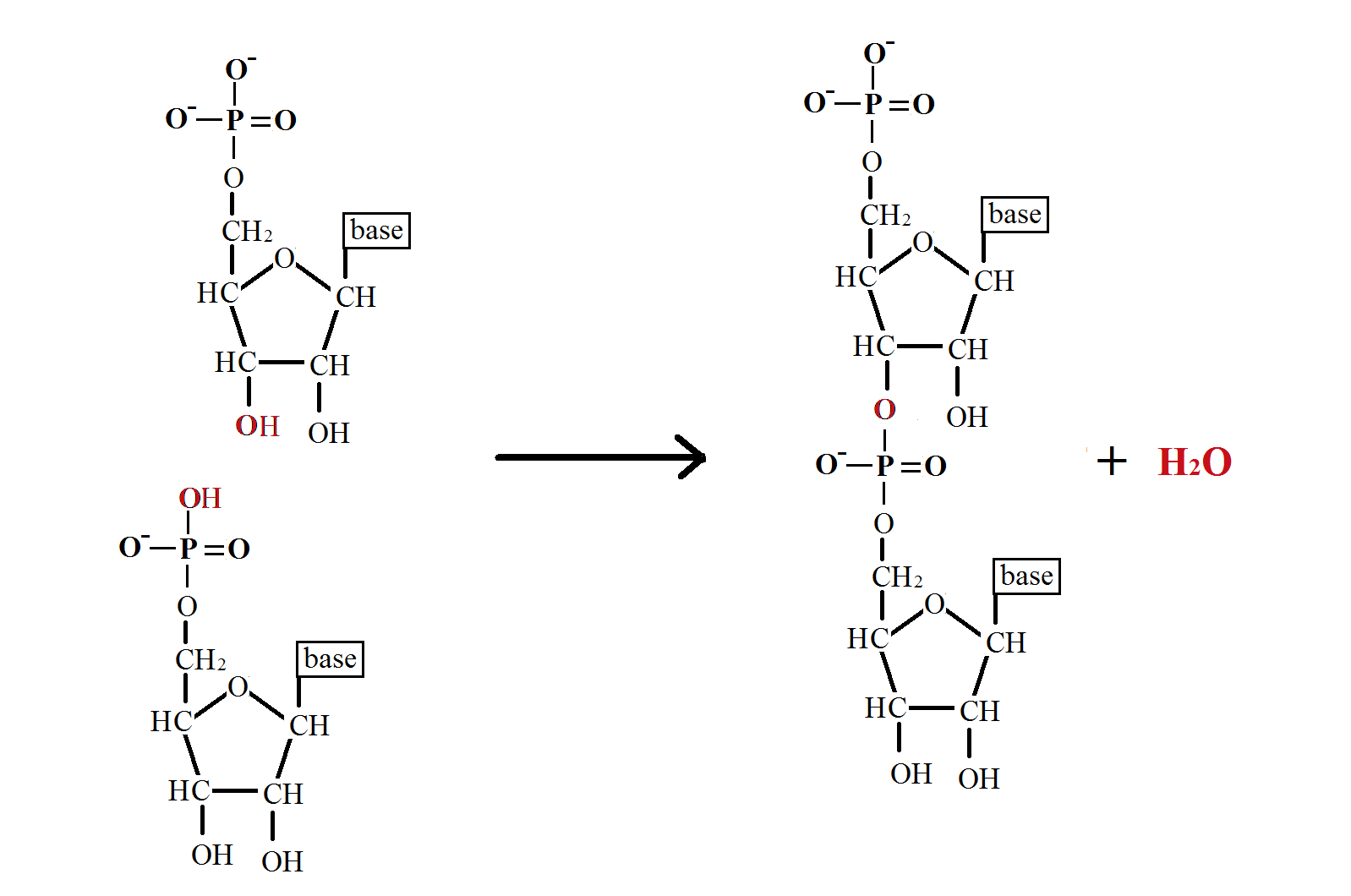Phosphodiester bond: Difference between revisions
No edit summary |
No edit summary |
||
| Line 1: | Line 1: | ||
{| cellspacing="1" cellpadding="1" border="1" style="width: 200px; height: 66px;" | |||
|- | |||
| Contents | |||
|- | |||
| | |||
Phosphodiester Bond Formation | |||
Mechanism | |||
|- | |||
| | |||
Phosphodiester Bond Hydrolysis | |||
Mechanism | |||
|} | |||
The phosphodiester bond links two [[Pentose|pentose ]](5 carbon sugar) to a [[Phosphate group|phosphate group]] by strong, [[Covalent|covalent]], [[Ester bond|ester bonds]]. The formation of these bonds is a [[Condensation Reaction|condensation reaction]] in which water is lost. This bond is a key structural feature of the backbone of DNA and RNA and links the 3’ carbon of one nucleotide to the 5’ carbon of another to produce the strands of [[DNA|DNA and]] [[RNA|RNA]]. | The phosphodiester bond links two [[Pentose|pentose ]](5 carbon sugar) to a [[Phosphate group|phosphate group]] by strong, [[Covalent|covalent]], [[Ester bond|ester bonds]]. The formation of these bonds is a [[Condensation Reaction|condensation reaction]] in which water is lost. This bond is a key structural feature of the backbone of DNA and RNA and links the 3’ carbon of one nucleotide to the 5’ carbon of another to produce the strands of [[DNA|DNA and]] [[RNA|RNA]]. | ||
Revision as of 16:09, 12 December 2010
| Contents |
|
Phosphodiester Bond Formation Mechanism |
|
Phosphodiester Bond Hydrolysis Mechanism |
The phosphodiester bond links two pentose (5 carbon sugar) to a phosphate group by strong, covalent, ester bonds. The formation of these bonds is a condensation reaction in which water is lost. This bond is a key structural feature of the backbone of DNA and RNA and links the 3’ carbon of one nucleotide to the 5’ carbon of another to produce the strands of DNA and RNA.
Phosphodiester Bond Formation
In phosphodiester formation, the 1’ and 2’ hydroxyl (OH) groups of the phosphate molecule bind to the 3’ and 5’ carbons of the two independent pentose sugars. These are two condensation reactions so produce two molecules of water. The phosphate is then bonded to the sugars by two ester bonds, so is called a phosphodiester bond. This reaction is catalysed by ligases, such as DNA ligase during DNA replication.
The mechanism for this reaction is given below.
Phosphodiester Bond Hydrolysis
In phosphodiester hydrolysis, water dissociated into H+and OH-. The OH- acts as the nucleophile in the nucleophilic substitution reaction of hydrolysis. The reaction is catalysed by phosphodiesterase.
The mechanism of this reaction is given below.

